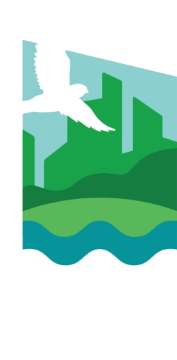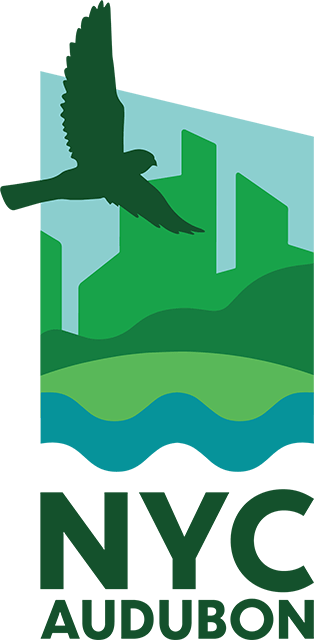Frequently Asked Questions about NYC Audubon’s Name Change
In Spring 2023 after a months-long assessment process, NYC Audubon’s leadership began the process to change the organization’s name by dropping “Audubon” and choosing a new name that better reflects our organizational values and our work. We embarked on a collaborative and robust process to select a new name that encapsulates who we are and what we do, and that is inclusive and welcoming to all New Yorkers. We will announce a new name in Spring 2024.
Here are some answers to questions that might be on your mind.
What's Your New Name?
We don’t yet have a new name but will announce one in Spring 2024. We have undertaken a robust process to identify a name that encapsulates who we are and what we do, and that is inclusive and welcoming to all New Yorkers.
Here are some answers to questions that might be on your mind.
What's Your New Name?
We don’t yet have a new name but will announce one in Spring 2024. We have undertaken a robust process to identify a name that encapsulates who we are and what we do, and that is inclusive and welcoming to all New Yorkers.
Who was John James Audubon?
John James Audubon was a 19th-century artist and naturalist who achieved fame for his series of paintings of North American bird species released in sections between 1827 and 1838. In addition to being collected in the super-sized book The Birds of America, engravings of the birds he painted were sold by subscription and became a hugely popular way to explore avian life. Many of his original paintings and prints can be viewed now at the New-York Historical Society.
So popular were the paintings and engravings that after his death, Audubon’s name became associated with bird conservation. Many conservation groups now bear his name in tribute, as do numerous parks, streets, zoos, sanctuaries, and birds with “Audubon” in the name.
However, there is another side to John James Audubon which has emerged recently through historical research and popular discourse. Audubon was a man who owned, purchased, and sold enslaved people. He also wrote about returning escaped enslaved people to their owners and of his strong opposition to the growing abolitionist movement. (Read more about John James Audubon here.)
Was John James Audubon a conservationist?
While John James Audubon did not identify as a conservationist in the modern sense of the word, he did make important contributions to the early conservation movement.
While John James Audubon did not identify as a conservationist in the modern sense of the word, he did make important contributions to the early conservation movement.
Audubon was born in 1785 and lived during a time when the idea of protecting natural resources was not yet widespread. His main focus was on documenting and illustrating the birds of North America, which he believed were not well-known or appreciated by many Americans at the time.
However, Audubon did recognize the need to protect the habitats where the birds he studied lived. In his writings, he often commented on the destruction of forests and wetlands. In his Labrador Journal of 1833, and elsewhere, Audubon lamented the destruction of wildlife and declining bird population, noting: “Nature herself seems perishing. . . . When no more fish, no more game, no more birds exist on her hills, along her coasts, and in her rivers, then she will be abandoned and deserted like a worn-out field.” Audubon advocated for creation of the country’s first natural history museum and the establishment of bird sanctuaries which could provide safe spaces for birds to breed and thrive.
Audubon’s work inspired the founders of the early groups that took his name. From this work which popularized an appreciation for birds and nature, a national conservation movement was born. Many of today’s important bird conservation actions—the Migratory Bird Treaty Act and the ban on DDT—as well as critical community-based science efforts like the Christmas Bird Count, the Breeding Bird Atlas project, and the Great Backyard Bird Count owe a debt to Audubon’s art and the movement it inspired.
Was John James Audubon the founder of the Audubon Societies?
The Audubon societies, and the bird conservation movement, were created nearly 50 years after John James Audubon’s death.
John James Audubon died in 1851. In 1896, Harriet Hemenway and Minna B. Hall founded the Massachusetts Audubon Society, dedicated to stopping the killing of birds for plumage for women’s hats. In 1905, the founders of the National Audubon Society similarly chose the Audubon name for their organization because of its association with beautiful images of birds and Audubon’s important work in spreading knowledge of the diversity of bird species.
John James Audubon died in 1851. In 1896, Harriet Hemenway and Minna B. Hall founded the Massachusetts Audubon Society, dedicated to stopping the killing of birds for plumage for women’s hats. In 1905, the founders of the National Audubon Society similarly chose the Audubon name for their organization because of its association with beautiful images of birds and Audubon’s important work in spreading knowledge of the diversity of bird species.
Why is this a problem now?
Audubon’s name long conjured strongly positive images for many people, and for more than a century has been synonymous with birds and bird conservation.
But now that positive association has changed, with a spreading awareness of Audubon’s ownership, purchase, and sale of enslaved people and his defense of the practice as an anti-abolitionist. These revelations about Audubon’s activities and beliefs have upended his image and tarnished his legacy. As a result, many of our members, staff, and board believe that continued association with the Audubon name would be at odds with our values and our commitment to equity and inclusion and would do great harm to our efforts to expand our reach and bring more people into bird conservation.
Wasn’t Audubon just a person of his time?
Audubon owned and sold slaves, as did many peers in the United States in his time. His household was supported by enslaved people and Audubon sold enslaved people to finance his collecting and publishing work. While on a collecting trip to a plantation, he encountered escaped enslaved people and returned them to their owners. Audubon has also been associated with the collection of human skulls from Indigenous people, a practice that some naturalists of his time participated in. Skulls that Audubon found or acquired during his travels made their way to Philadelphia. There, they became study specimens for Dr. Samuel George Morton, whose theories on skull size and intelligence formed the background of scientific racism. (Read more here.)
During Audubon’s life the abolitionist movement was growing in strength, especially in New York where Audubon lived. By 1820 all of the Northern states had passed legislation to abolish slavery, but Audubon remained a defender of slavery and staunchly anti-abolitionist. (Read more here.)
There are actions taken in the past that have real impact on people today. As an organization, we choose to recognize and acknowledge that for many people, the Audubon name and legacy is now painful, off-putting, a barrier. Living up to our values and our commitment to inclusion means that we cannot have a name that conjures up slavery and discourages involvement from anyone.
We want all New Yorkers to discover the joy that birds and nature provide, the value of being in wild habitats. We hope to make all people feel welcome in the spaces where we work and bird. Our name change gives us a chance to determine how we want to be known for the bird conservation work we do, and the engagement work that helps it. A name change is an expression of our values of inclusion.
A name change isn’t enough. How are you going to start engaging diverse audiences?
NYC Audubon has been working to engage diverse audiences for a long time and is committed to expanding this work. We are thrilled to share the wonder of birds with our NYCHA in Nature program that engages residents of the city's public housing. We run hundreds of bird outings each year across all five boroughs (most of them free) including several in multiple languages and with physical accessibility in mind. In 2023, we published the city's first Spanish-English bird guide for birders, Las Aves de la Ciudad de Nueva York/The Birds of New York City. (Read more about the field guide, here.) In addition, our Young Conservationists group creates community for birders under 35. Though all of these efforts, we continue to work to engage New Yorkers in the amazing world of birds, sharing their challenges and the solutions we can work on together. Read more about our commitment to Equity, Diversity, Inclusivity, and Accesibility and how we center it in our work here.
How does changing the name help your work?
Birds are in peril. Since 1970, the number of individual birds in North America has declined by approximately three billion. And scientists estimate that by 2080, nearly two-thirds of North American bird species will have lost more than half of their range due to urbanization and climate change. (In New York City, you can see which bird species are most in jeopardy using this tool.)
We are a bird conservation organization. To save birds, we need allies, partners, and broad popular support. A name once chosen for its popular appeal and association with beautiful images of birds is now associated with slavery and racism. As a result, that name has become a barrier to people who might otherwise become involved in or support our work. We have decided we must take active steps to remove that barrier. The more people who hear our message and help us save bird populations, the better. The protection of birds depends on the work and support across all of the City’s communities.
For the sake of the Philadelphia Vireo, the Golden-winged Warbler, the Cerulean Warbler, the Bobolink, the Saltmarsh Sparrow, the Piping Plover, the Fish Crow, and many other species, we need help. We cannot allow our name to be a barrier to our conservation, advocacy, and engagement work.
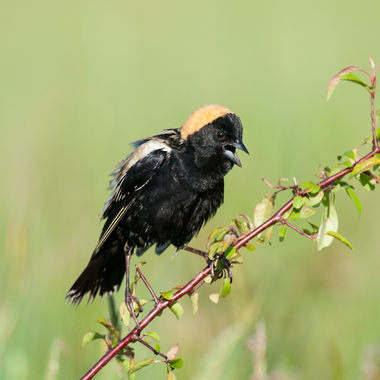
Bobolink. Photo: Bookguy / Getty Images
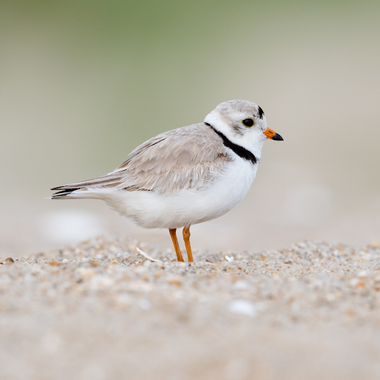
Piping Plover. Photo: Harry Collins / Getty Images
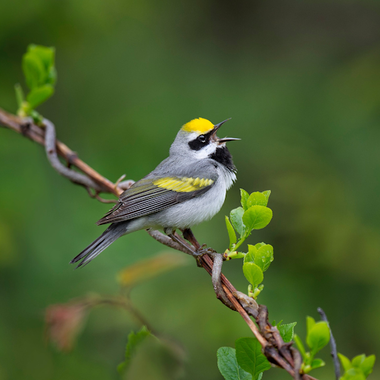
Golden-winged Warbler. Photo: Raymond Hennessey
Does a name change mean you also reject his bird paintings?
John James Audubon’s paintings are indeed beautiful and inspiring. We can value his art and achievement as a naturalist while rejecting his conduct and morality. Audubon was a skilled artist whose folios of bird paintings and his five-volume treatise on ornithology revealed to the world the richness and variety of avian life, and his direct impact on the birth of an American conservation movement continues to matter to us.
Aren’t you participating in “cancel culture”? Isn’t it better to acknowledge past wrong-doings, rather than erase history?
It’s not our intent to “cancel” John James Audubon. We are mindful of the past and of his contributions to the work we do today. But as we look at the future, we believe it is time to change our name. If we do not engage new audiences now with the nature in their midst, with birds, then our ability to effect meaningful changes on behalf of birds will suffer.
We are celebrating this moment in the evolution of our organization. We value this opportunity to share our values and to let New Yorkers know that we believe in an inclusive conservation movement. We have much work ahead of us, and much success to build on. We are the leader in preventing bird/building collisions in our city. We have studied the bird populations of the New York Harbor for decades, and are sounding the alarm about population decline due to climate change. We are at the forefront of the green roof movement to increase habitat for urban biodiversity. We share the wonder of birds through hundreds of free public programs annually. In changing our name, we hope to highlight that we are devoted to bird conservation and to an equitable conservation movement.
What was your assessment process?
NYC Audubon undertook a thorough and deliberate process, over eight months. In August 2022, we mapped out a detailed assessment process for the Audubon name and legacy, and what it means to our work.
NYC Audubon undertook a thorough and deliberate process, over eight months. In August 2022, we mapped out a detailed assessment process for the Audubon name and legacy, and what it means to our work.
During Fall 2022, our committees (made up of Board, staff, and Advisory Council members) made the Audubon name a focal point of their quarterly meetings, looking at how the name positively and negatively affected the strategic work of each committee, from Conservation and Education & Public Programs, to Finance and Fundraising. Our EDIA committee considered its objective—to foster and ensure diverse representation within both the organization and the larger environmental conservation movement—and the Audubon name’s impact on it. Committees shared their assessments with the full board. At year-end we held a special single-topic board meeting and invited every board member to share more personal perspectives. Similarly, our staff also held a single-topic meeting to consider the Audubon name.
We’ve reached out to approximately 400 supporters, including members, donors, and institutional funders, to hear their thoughts and we have discussed the issue with dozens of strategic partners, including conservation research groups, conservancies managing public green spaces, and education organizations. We discussed the Audubon name and legacy with our longtime members and collected perspectives from younger members. We talked to lifelong birders and those who developed an interest in birds more recently.
Ultimately, what we learned is that our bird and habitat protection efforts cannot succeed without work and support across all of the City’s communities. We believe that the Audubon name stands in our way.
Ultimately, what we learned is that our bird and habitat protection efforts cannot succeed without work and support across all of the City’s communities. We believe that the Audubon name stands in our way.
How did the board vote on this decision?
Our board and its committees had a series of meetings between September-March to discuss our name thoroughly. Following our process, we held a special board session on March 20, and the board of directors voted to change our name and begin the process of selecting a new name.
Our board and its committees had a series of meetings between September-March to discuss our name thoroughly. Following our process, we held a special board session on March 20, and the board of directors voted to change our name and begin the process of selecting a new name.
Don’t you rely on name recognition to do your work in saving birds?
Yes, we do, and we know that in changing our name, we may have to work harder to introduce ourselves to new partners and new people. But we have 40 years of work on behalf of birds in the five boroughs of NYC to stand on and amplify. We’ve helped New York City pass the most robust bird-safe building design laws in the country. We monitor artificial light and its effect on migratory birds, including at the 9/11 Memorial and Museum. We work to study and expand the use of amazing green roofs like the magnificent one at the Javits Center. We study waterbirds like herons and egrets, and we monitor coastal habitat. So yes, we will have to work to remind people that we are the same committed people, doing the same important work in the greatest city in the world, on the Atlantic flyway—just by a new name.
At the same time, we heard throughout our assessment process that for many people, the Audubon name has little or no recognition. We realized there was an opportunity to choose a name that better represented and more clearly signaled what we do.
Are you still an Audubon chapter?
Yes. Despite bearing a different name, we will remain a chapter of National Audubon Society, with whom we share a commitment to bird conservation amid a global climate crisis and habitat degradation. Our work will not change; it will expand. Our work alongside the 400 other chapters in the network will continue and we will support the work of the national organization in order to maximize successes for birds and habitat. The problems that birds face are too important for any one chapter to take on. We will work together as we have for more than 40 years, to conserve birds and habitat in the five boroughs of NYC.
What is the rest of the Audubon network doing?
NYC Audubon is part of a national network of 400 local, independent chapters affiliated with the National Audubon Society, which in Spring 2023 announced its plan to keep the Audubon name after a year-long deliberation. Many chapters around the country have undergone similar processes to assess the Audubon name; as of the time of this writing (March 2024) we know of more than 30 chapters have changed or plan to change their name.
Chapters which have changed their names:
Chapters which have changed their names:
- Golden Gate Audubon is now Golden Gate Bird Alliance (CA)
- Mount Diablo Audubon Society is now Mount Diablo Bird Alliance (CA)
- Wintu Audubon Society is now Shasta Birding Society (CA)
- Georgia Audubon is now Birds Georgia (GA)
- Chicago Audubon Society is now Chicago Bird Alliance (IL)
- John Wesley Powell Audubon is now Grand Prairie Bird Alliance (IL)
- Jayhawk Audubon Society is now Lawrence Bird Alliance (KS)
- Audubon Naturalist Society is now Nature Forward (MD; unaffiliated with National Audubon)
- Detroit Audubon Society is now Detroit Bird Alliance (MI)
- Laughing Whitefish Audubon is now Laughing Whitefish Bird Alliance (MI)
- Washtenaw Audubon Society is now Washtenaw Bird & Nature Alliance (MI)
- Central New Mexico Audubon Society is now Bird Alliance of Central New Mexico (NM)
- Portland Audubon Society is now Bird Alliance of Oregon (OR)
- Charleston Audubon and Natural History Society is now Charleston Natural History Society (SC)
- Seattle Audubon Society is now Birds Connect Seattle (WA)
- Tahoma Audubon is now Tahoma Bird Alliance (WA)
- Gaylord Nelson Audubon Society is now Gaylord Nelson Bird Club (WI)
- Madison Audubon is now Southern Wisconis Bird Alliance (WI)
- Northeastern Wisconsin Audubon is now Northeastern Wisconsin Bird Alliance (WI)
- Red Desert Audubon Society is now Red Desert Avian Society (WY)
Chapters which have announced intentions to change their names:
- Maricopa Audubon Society (AZ)
- Sacramento Audubon Society (CA)
- San Diego Audubon Society (CA)
- DC Audubon Society (Washington DC)
- South Bend-Elkhart Audubon Society (IN)
- Grosse Pointe Audubon Society (MI)
- Audubon Chapter of Minneapolis (MN)
- New Hope Audubon (NC)
- Buffalo Audubon Society (NY)
- New York City Audubon (NY)
- Audubon Miami Valley (OH)
- Audubon Society of Lincoln City (OR)
- Wyncote Audubon Society (PA)
- Audubon Society of Northern Virginia (VA)
Where can I learn more?
Check out these resources to learn more about bird conservation and extinction, and John James Audubon.
John James Audubon and the Audubon Name
- Audubon Magazine, “The Myth of John James Audubon" by Gregory Nobles (Summer 2020)
- Audubon Magazine, “What do we do about John James Audubon” by J. Drew Lanham (Spring 2021)
- Audubon Magazine, “What’s in a Bird Name?” by Arianna Remmel (Summer 2022)
- Commonplace, “We Left All On the Ground But the Head: J.J. Audubon’s Human Skulls” by Ann Fabian, author of The Skull Collectors: Race, Science, and America’s Unburied Dead (Nov 2021)
The Audubon Network
- The Wildlife News, “What’s in a Name? National Audubon Society” by Anne Millbrooke (October 2022)
- The Christian Science Monitor, “How Audubon societies are grappling with a racist past” by Philip Marcelo (July 15, 2021)
- Washington Post, “The largest Audubon group yet is changing its name, rebuking an enslaver” (July 28, 2022)
- Washington Post, “National Audubon Society, pressured to drop enslaver’s name, keeps it” (March 15, 2023)
Birds In Peril
- New York Times, “The Crisis for Birds is a Crisis for Us All” (September 19, 2019)
- National Audubon Society, Survival by Degrees: 389 Bird Species on the Brink
- Cornell Lab of Ornithology, Nearly Three Billion Birds Gone
